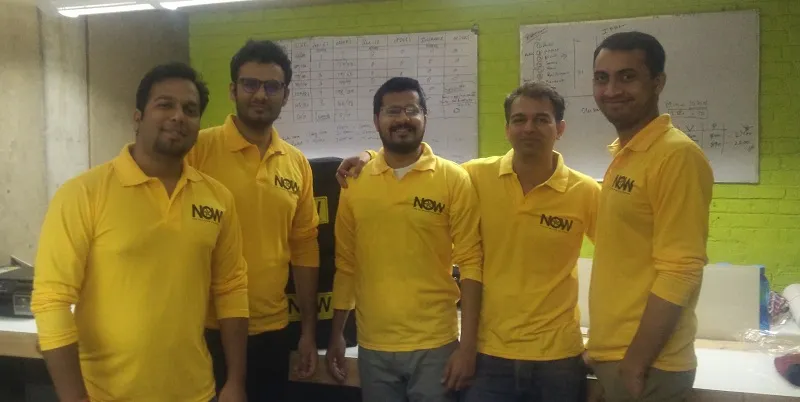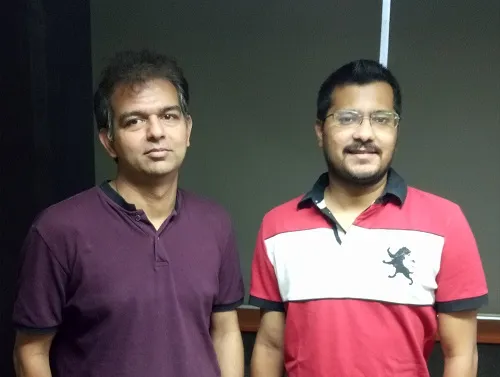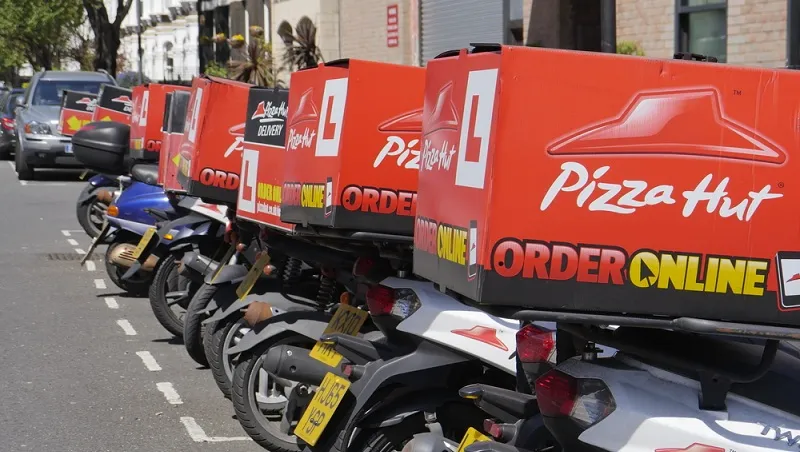As many died in the sector, NOW Delivery turned profitable in hyperlocal delivery, and is expanding
The startup made money with its bike taxi model at first, but later pivoted to food and medical delivery.

At a Glance
Startup: NOW Delivery
Founders: Vivek Pandey and Bharat Khandelwal
Year it was founded: 2016
Where it is based: Noida
The problem it solves: No-delay delivery for food and medical needs
Sector: Hyper local delivery
Funding raised: $1 million
Hyperlocal delivery is a sector where more startups have died than thrived. In 2016, there were about 20 startups in the space. Of these, many have shut down, got acquired, or pivoted.
So, when former Times Internet professionals Vivek Pandey, 37, and Bharat Khandelwal, 35, decided to start up in this sector, they were cautious.
Vivek had earlier worked with Flipkart, and knew the importance of the last mile delivery network built by Flipkart. He sought to extend the same reach and delivery capabilities to offline stores to enable quick last mile delivery. Launched in Noida in January 2016, NOW Delivery began as a bike taxi platform; and between lunch and dinner time, it would do hyper-local food deliveries.
The startup made money with its bike taxi model at first, but the founders felt food delivery was a more robust business to get into. They started with hiring riders on a contractual basis as a crowd-sourced horizontal delivery platform, and today, NOW Delivery has 500-600 riders in Delhi-NCR.

“We wanted to do delivery for medical needs as well, as peak hours for food delivery are only during lunch and dinner slots. Medical delivery, on the other hand, is pretty much uniform throughout the day. So, the delivery executives who have partnered with us will not be idle during those hours,” says Vivek, an IIT alumnus and MBA graduate from the University of Rochester.
NOW Delivery’s clients include Pizza Hut, KFC, Burger King, Subway, Fortis, and Apollo Pharmacies, as well as stand-alone pharmacies, among others. Once an order is placed, the NOW Delivery app notifies the nearest rider, who picks up and delivers the order to customer. In short, if a customer places an order with Pizza Hut, the delivery is done by NOW.
The end consumer only interacts with NOW Delivery’s delivery executive.
Vivek claims most delivery executives earn Rs 20,000-Rs 25,000 per month as they are paid per delivery. He adds that at the request of its clients, NOW Delivery has also started operations in Bengaluru.
What did NOW Delivery do right?
From Parcelled and TinyOwl to Pickingo and Peppertap, the shut downs in the hyper local delivery sector showed that no amount of funding could save a business. Even Flipkart had to shut down its local delivery platform Nearby as it could not scale.
So, what is NOW Delivery doing to ensure it won’t be one among them?
Vivek explains, “This is a tightly operational business. For most of our competitors, unit economics went wrong. Other players could not make the unit economics or their drivers could not make enough money.”
NOW Delivery maintains a balance between the number of drivers in a cluster and the orders they get in that cluster. Merchants’ order flow varies every day, but a regular flow of orders is essential for a driver’s income. So, NOW Delivery tied up with bigger chains that have a higher number of regular orders.
Also, the startup decided to keep away from ecommerce deliveries and focused only on last mile as it felt the service was needed the most in this segment.
“Nobody follows this model at the moment. Shadowfax was an earlier competitor – now they do B2B ecommerce only. We are exclusive with all our clients,” Vivek adds.
After all, clients want a fool-proof system that ensures availability of riders, and no delays in delivery. “We get 60 percent food orders from 7 to 11 pm. Part time drivers are also available at this time. We check for the drivers’ license and registration, and train them,” Vivek tells YourStory.
Tech behind NOW
There are multiple parameters on which an order is allocated to a rider such as order category -food, medicine, grocery, etc - location of the outlets/ customer/ rider, and the number of orders a rider has already done to ensure parity in earnings, etc. Based on all these factors, the company uses linear programming methods to choose which riders are best suited to deliver a set of orders in the shortest time.

A rider’s app enables him to upload documents to sign up, and go online to pick up delivery jobs. This app is the sole point of interaction for the riders with NOW, wherein he gets delivery jobs to pick up, updates regarding duty timings, payouts, incentives, referral schemes etc. The riders’ moves are all tracked by the GPS-enabled app.
Currently, the startup is applying Machine Learning on picking the best rider. “This would lead to faster allocation and reduce our ops to a fraction of what it is currently. Also, it will be a scalable system which can even handle a couple of hundred thousand orders a day,” says Vivek.
In addition, NOW Delivery’s automated rider management system acts as a rider’s manager, suggesting him best times to go online, how many orders he is away from to get to the next incentive slab etc.
NOW Delivery gives merchants analytics reports of the orders they have placed, order costs, trends, etc, and monitors their Key Performance Indicators. “We are building even simpler ordering platforms based on voice and visual feedback, wherein the merchant can either just announce the order, or click the picture of the bill to initiate the ordering process,” says Vivek.
Next for NOW
NOW Delivery’s core team of seven has experts in product, logistics, data science and business development. They have five cluster managers as well.
Although modeled after UberEats and Britain’s Deliveroo, NOW Delivery recently started B2C courier delivery through a tie up with BlueDart. It plans to expand to B2B distribution for merchants soon.
On the tech side, the startup is making the app lighter as most driver partners possess low-end phones. The team is also working to enable voice commands which are convenient while riding a bike. Furthermore, the app has been tuned to work with poor network and low connectivity.
The app is already in available in English and Hindi, and NOW Delivery plans to roll it out in even more languages as it expands to more geographies.
The company has raised close to $1 million from strategic investors. Vivek claims that it is operationally profitable since it makes money in every transaction. They are raising Series A now.
In the last fiscal, NOW Delivery did 5,00,000 deliveries. With 20-25 percent profit in each transaction, it generated $5,00,000 in revenue. They plan to make it five million deliveries and $4 million in revenue this year.
There are more than 14 million retail stores, 1.5 million restaurants, and one million pharmacies in India. NOW Delivery has just scratched the surface of a humongous market.







